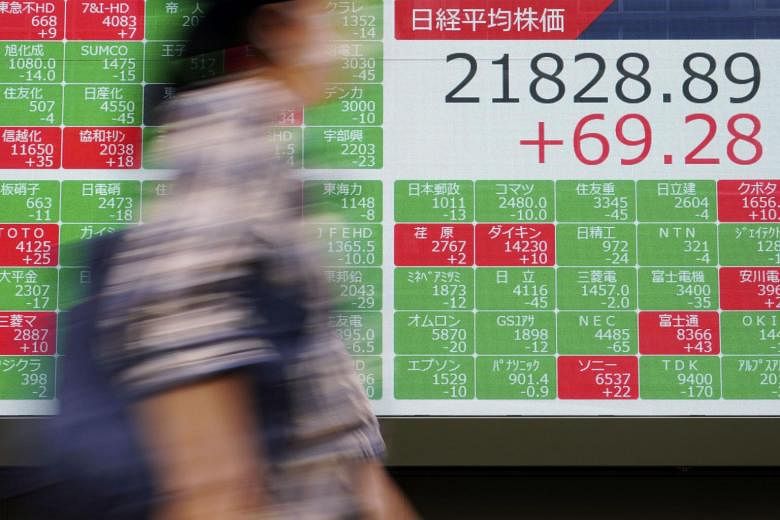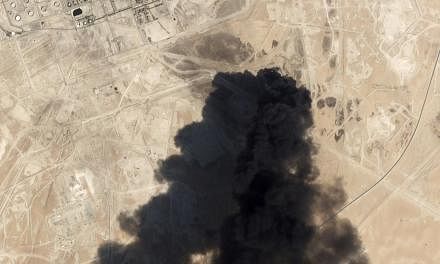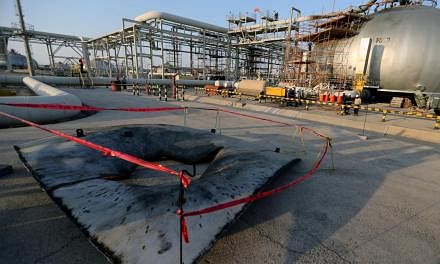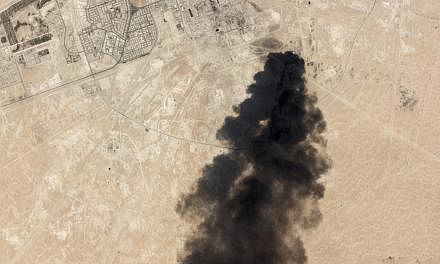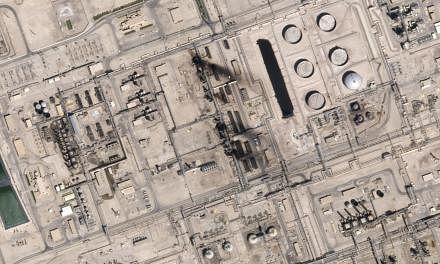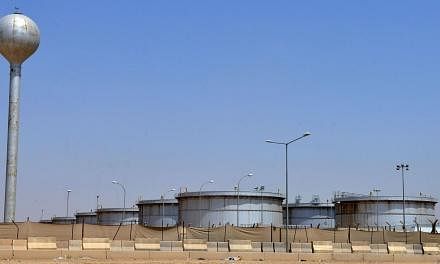SYDNEY (REUTERS) - Oil prices surged to six-month highs on Monday (Sept 16) while Wall Street futures fell and safe-haven bets returned after weekend attacks on Saudi Arabia's crude facilities knocked out more than 5 per cent of global oil supply.
US crude futures were last up 11 per cent at US$61.10 a barrel, coming off highs on expectations other global oil suppliers would step in to lift output. Brent crude soared 13 per cent at US$68.06 after earlier rising to US$71.95.
Yemen's Iran-backed Houthi rebel group had claimed responsibility for the attack, which hit the world's biggest oil-processing facility but a senior US official told reporters on Sunday that evidence indicated Tehran was behind it.
The attacks heightened investor worries about the geopolitical situation in the region and worsening relations between Iran and the United States.
Those fears powered safe-haven assets, with prices for gold climbing 1 per cent in early Asian trade to US$1,503.09.
Moves in Asian share markets were small, however, with Japan shut for a public holiday.
MSCI's broadest index of Asia-Pacific shares outside Japan was a tick lower at 515.4. Australian shares were down 0.1 per cent while South Korea's KOSPI was a tad higher.
E-Minis for the S&P 500 were off 0.4 per cent while those for the Dow eased 0.3 per cent.
"If risk appetite collapses due to fears of worsening Middle East tensions in the wake of any retaliation to the drone attacks, some emerging markets could face a double whammy of pressures," said Mitul Kotecha, Singapore-based senior emerging markets strategist at TD Securities.
"In Asia, the most risk sensitive currencies are Indian rupee, Indonesian rupiah and Philippine peso ."
BONDS AND CURRENCIES
Among major currencies, the Saudi news pushed the yen up 0.4 per cent to 107.64 per US dollar while the Canadian dollar rose 0.5 per cent in anticipation of higher oil prices.
The euro was little moved near a three-week top while the pound hovered near Friday's two-month highs. That left the greenback down 0.15 per cent at 98.105 against a basket of six major currencies.
The risk-sensitive Australian dollar was down 0.5 per cent against the yen, snapping nine straight days of gains. The kiwi dollar slipped to a one-week low on the yen.
"One immediate question this (attack) poses for bond markets is whether a further rise in the inflation expectations component of bond yields - which have proved historically sensitive to oil prices - will give this month's sharp bond market sell-off fresh impetus," said NAB analyst Ray Attrill.
"Or will safe haven considerations dominate to drive yields lower? Watch this space."
In early Asian trading, futures for US 10-year Treasury notes rose 0.3 per cent, indicating yields may slip when cash trading begins.
Global bonds were sold off last week, sending yields higher, led by a broader risk rally on hopes the United States and China would soon end their long trade war. Better-than-expected US retail sales data also boosted sentiment.
Chinese data for industrial production, retail sales and fixed asset investment will be released later on Monday, which could help set the tone for this week.
Investors also await the outcome of the US Federal Reserve's policy meeting on Wednesday at which it is widely expected to ease interest rates and signal its future policy path.
